Your cart is currently empty!
Tag: Flexibility
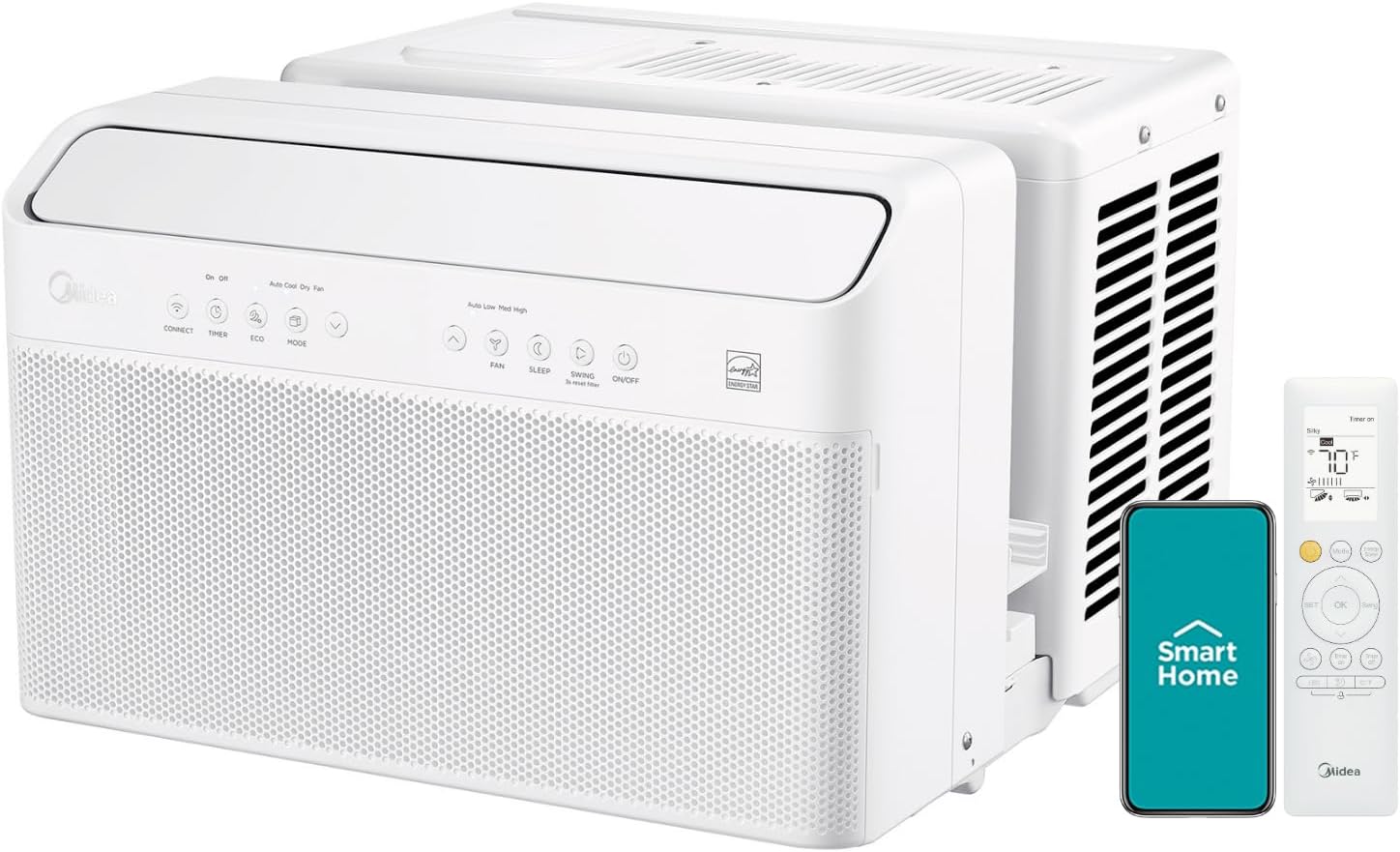
Midea 10,000 BTU U-Shaped Smart Inverter Window Air Conditioner–Cools up to 450 Sq. Ft., Ultra Quiet with Open Window Flexibility, Works with Alexa/Google Assistant, 35% Energy Savings, Remote Control
Price:$429.99– $364.99
(as of Nov 22,2024 02:20:45 UTC – Details)
Introducing the first U-shaped Inverter Window Air Conditioner allows you to open or close your window while the unit is installed.Ultra Quiet – The U-shaped design blocks the noise from the outside compressor.
Long-distance Airflow up to 20 feet – The strong Airflow allows you to feel the cold air up to 20 feet away.
Warranty – 1 Year Parts & Labor Warranty comes with each Midea product to ensure the quality of our brand to our customers. Our team is happy to help if any questions or issues arise, and make sure to register your product on our website for even faster support in the future.FAQs:
1. Does the product comes with a mounting bracket and mounting accessories?
– The product includes a quick-snap bracket. No separate purchase is needed.
2. This is my first installation experience. How can I install the item?
– You can read the instruction of the installation manual or watch the installation video on the detail page.
3. I found that there are missing parts in the package.
– Please check the packages to avoid missing accessories in the corner or under the foam (ex., L brackets). We are always happy to assist you by hotline and email.
4. There is a gap between the body and the accessories after installation.
– Please watch the installation video on the product page for steps to seal the gap.
5. The machine is not cooling or cooling slowly.
– Please select the appropriate capacity section according to the recommended area. (2) Check if the machine is in cooling mode. (3) May need a larger unit depending on your area’s climate.
6. Can the display light of the machine and the key “beep” sound be turned off?
– Yes, you can turn off the display light and sound in the new application .
ULTRA QUIET – The U-shape design of Midea U Smart Inverter AC uses your window to block noise outside. The highly-efficient inverter system warrants ultra-low noise and vibration, 9x quieter than traditional units with operation as low as 32 dBA.Cooling Watts : 890W. Rated Cooling Amps (AHAM) : 9.97.Control Type : Electronic. Refrigerant : R32
MORE THAN 35% ENERGY SAVINGS – With the advanced DC Inverter technology, Midea U achieves over 35% energy savings compared to other traditional units. It is the first window AC to obtain the ENERGY STAR Most Efficient Certification
SMART CONTROL – Midea U Smart Inverter AC is Wi-Fi enabled and can be controlled from anywhere using the MSmartHome app on iOS or Android. You can also use voice commands throughout your house, office, or apartment using Alexa or Google Assistant devices
FLEXIBLE WINDOW OPENING – The U-shaped design allows your window to open, bringing fresh air into your home and maintaining more of your view when the unit is installed. When the window is closed, the Anti-Theft Mechanism locks the window for added safety
ROBUST INSTALLATION – Install the included quick-snap bracket, set the unit on the bracket, and secure the sidearms. Then you are all done and ready to enjoy. Available for single-hung or double-hung windows with width 22″-36″, minimal height at 13.75″Customers say
Customers like the quietness, functionality, and cooling ability of the air conditioner. They mention it’s very quiet, works well, and cools much better. Some also appreciate the design and energy efficiency. However, some customers differ on the ease of installation and longevity.
AI-generated from the text of customer reviews
Looking for a powerful and efficient air conditioner to keep your space cool and comfortable? Look no further than the Midea 10,000 BTU U-Shaped Smart Inverter Window Air Conditioner!This innovative air conditioner is designed to cool up to 450 square feet, making it perfect for bedrooms, living rooms, and even small apartments. With its ultra quiet operation, you can enjoy a cool environment without any distracting noise.
One of the standout features of this air conditioner is its open window flexibility. Unlike traditional window air conditioners, the U-shaped design of this unit allows you to open and close your window with ease, maintaining a sleek and unobtrusive appearance.
In addition to its convenient design, this air conditioner is also smart-enabled, allowing you to control it using Alexa or Google Assistant. You can easily adjust the temperature, set schedules, and monitor energy usage from anywhere using your smartphone or voice commands.
Not only is this air conditioner convenient and efficient, but it also helps you save on energy costs. With a 35% energy savings compared to traditional models, you can stay cool without breaking the bank.
Say goodbye to sweltering summer days and restless nights with the Midea 10,000 BTU U-Shaped Smart Inverter Window Air Conditioner. Stay cool, comfortable, and in control with this innovative and powerful cooling solution.
#Midea #BTU #UShaped #Smart #Inverter #Window #Air #ConditionerCools #Ultra #Quiet #Open #Window #Flexibility #Works #AlexaGoogle #Assistant #Energy #Savings #Remote #Control
Scalability and Flexibility: Key Features of Modern Data Center Servers
In today’s fast-paced digital world, scalability and flexibility are key features that modern data center servers must possess in order to meet the increasing demands of businesses and organizations. Scalability refers to the ability of a system to handle a growing amount of work, or its potential to be enlarged to accommodate that growth. Flexibility, on the other hand, refers to the ability of a system to adapt and change easily in response to changing circumstances or requirements.Scalability and flexibility are crucial for data center servers because they allow organizations to easily expand their infrastructure as their needs grow, without having to completely overhaul their existing systems. This is particularly important in today’s data-driven world, where businesses are collecting and analyzing more data than ever before.
One of the key ways that modern data center servers achieve scalability is through virtualization. Virtualization allows multiple virtual servers to run on a single physical server, which enables organizations to easily scale up or down their computing resources as needed. This flexibility is essential for handling fluctuating workloads and ensuring that businesses can easily adapt to changing market conditions.
Another important feature of modern data center servers is the ability to easily add or remove storage capacity. With the increasing amount of data being generated and stored by organizations, having the ability to quickly expand storage capacity is essential. Modern data center servers often come equipped with hot-swappable drives, which allow for easy and quick installation of additional storage devices without having to power down the server.
In addition to scalability and flexibility, modern data center servers also prioritize energy efficiency. With the rising costs of electricity and the growing focus on sustainability, data centers are under pressure to reduce their energy consumption. Many modern servers are designed with energy-efficient components and power management features that help to minimize their environmental impact while still delivering high performance.
Overall, scalability and flexibility are key features that modern data center servers must possess in order to meet the growing demands of businesses and organizations. By investing in servers that prioritize these features, organizations can ensure that their infrastructure is able to grow and adapt to changing requirements, while also remaining energy-efficient and cost-effective.

Scalability and Flexibility: How Data Center Servers Meet Growing Business Needs
In today’s fast-paced and ever-evolving business landscape, the need for scalability and flexibility in data center servers has never been more important. As businesses grow and expand, their data storage and processing requirements also increase, making it crucial for data center servers to be able to adapt to these changing needs.Scalability refers to the ability of a system, in this case, data center servers, to handle an increasing amount of work or its potential to accommodate growth. As businesses collect more and more data, they need servers that can scale up to meet their growing storage and processing demands. This means having servers that can easily add more storage capacity, processing power, and memory as needed, without causing any downtime or disruption to operations.
Flexibility, on the other hand, refers to the ability of data center servers to adapt to changing business requirements and technologies. With the rapid pace of technological advancements, businesses need servers that can support new applications, software, and services without the need for a complete overhaul of their infrastructure. This requires servers that are compatible with a wide range of operating systems, virtualization platforms, and cloud services, allowing businesses to easily integrate new technologies into their existing infrastructure.
Data center servers that offer scalability and flexibility help businesses meet their growing storage and processing needs while also future-proofing their infrastructure. By investing in servers that can easily scale up or down and adapt to new technologies, businesses can ensure that their data center infrastructure can support their growth and innovation for years to come.
One of the key ways data center servers achieve scalability and flexibility is through virtualization. By virtualizing their servers, businesses can create multiple virtual machines on a single physical server, allowing them to easily scale up or down their computing resources as needed. This not only improves efficiency and reduces costs but also provides businesses with the flexibility to quickly deploy new applications and services without the need for additional physical hardware.
In addition to virtualization, modern data center servers also offer features such as modular design, hot-swappable components, and software-defined storage and networking, all of which contribute to scalability and flexibility. These features allow businesses to easily expand their storage and processing capacity, replace faulty components without causing downtime, and adapt to changing business requirements and technologies.
In conclusion, scalability and flexibility are essential features of data center servers that help businesses meet their growing storage and processing needs while also adapting to new technologies and business requirements. By investing in servers that offer scalability and flexibility, businesses can future-proof their infrastructure and ensure that they can continue to innovate and grow in the ever-changing business landscape.

Scalability and Flexibility in Data Center IT Operations
In today’s rapidly evolving digital landscape, data centers play a crucial role in storing, processing, and managing vast amounts of data. As businesses continue to expand their online presence and adopt cloud computing technologies, the need for scalable and flexible IT operations within data centers has become more important than ever before.Scalability in data center IT operations refers to the ability to easily expand or shrink the capacity of resources, such as storage, compute power, and networking, in response to changing business needs. A scalable data center infrastructure allows organizations to accommodate sudden spikes in data traffic, handle increased workloads, and support the growth of their business without experiencing downtime or performance issues.
Flexibility, on the other hand, refers to the ability to adapt and reconfigure IT resources quickly and efficiently to meet changing requirements. A flexible data center environment enables organizations to deploy new applications, services, and technologies rapidly, respond to market demands, and optimize resource utilization without disruption to ongoing operations.
Achieving scalability and flexibility in data center IT operations requires a strategic approach that involves implementing the right technologies, processes, and best practices. Here are some key strategies for enhancing scalability and flexibility in data center operations:
1. Virtualization: Virtualization technology enables organizations to abstract physical hardware resources and create virtual instances that can be dynamically allocated and reallocated as needed. By virtualizing servers, storage, and networking components, data centers can achieve greater flexibility and scalability, as well as improve resource utilization and reduce costs.
2. Automation: Automation tools and processes can help streamline IT operations, accelerate deployment processes, and eliminate manual tasks. By automating routine tasks such as provisioning, configuration, and monitoring, data centers can improve efficiency, reduce errors, and free up IT staff to focus on more strategic initiatives.
3. Cloud computing: Leveraging cloud services and hybrid cloud environments can provide organizations with on-demand access to scalable resources, such as storage, compute power, and applications. By integrating cloud services into their data center infrastructure, organizations can enhance scalability, flexibility, and agility, while reducing capital expenses and operational overhead.
4. Software-defined networking (SDN): SDN technology enables organizations to programmatically control and manage their network infrastructure through software, allowing for greater agility, flexibility, and scalability. By decoupling network control from physical hardware, data centers can dynamically adjust network configurations, optimize traffic flow, and support new services and applications more efficiently.
5. Modular design: Adopting a modular data center design approach can help organizations build scalable and flexible IT infrastructure that can easily be expanded or upgraded as needed. By using standardized building blocks, such as pre-fabricated modules and containerized data centers, organizations can rapidly deploy new capacity, improve resource utilization, and reduce time-to-market.
In conclusion, scalability and flexibility are essential attributes for modern data center IT operations to support the dynamic needs of businesses in today’s digital economy. By implementing the right technologies, processes, and strategies, organizations can enhance their ability to scale resources, adapt to changing requirements, and optimize their IT operations for improved performance, efficiency, and agility.
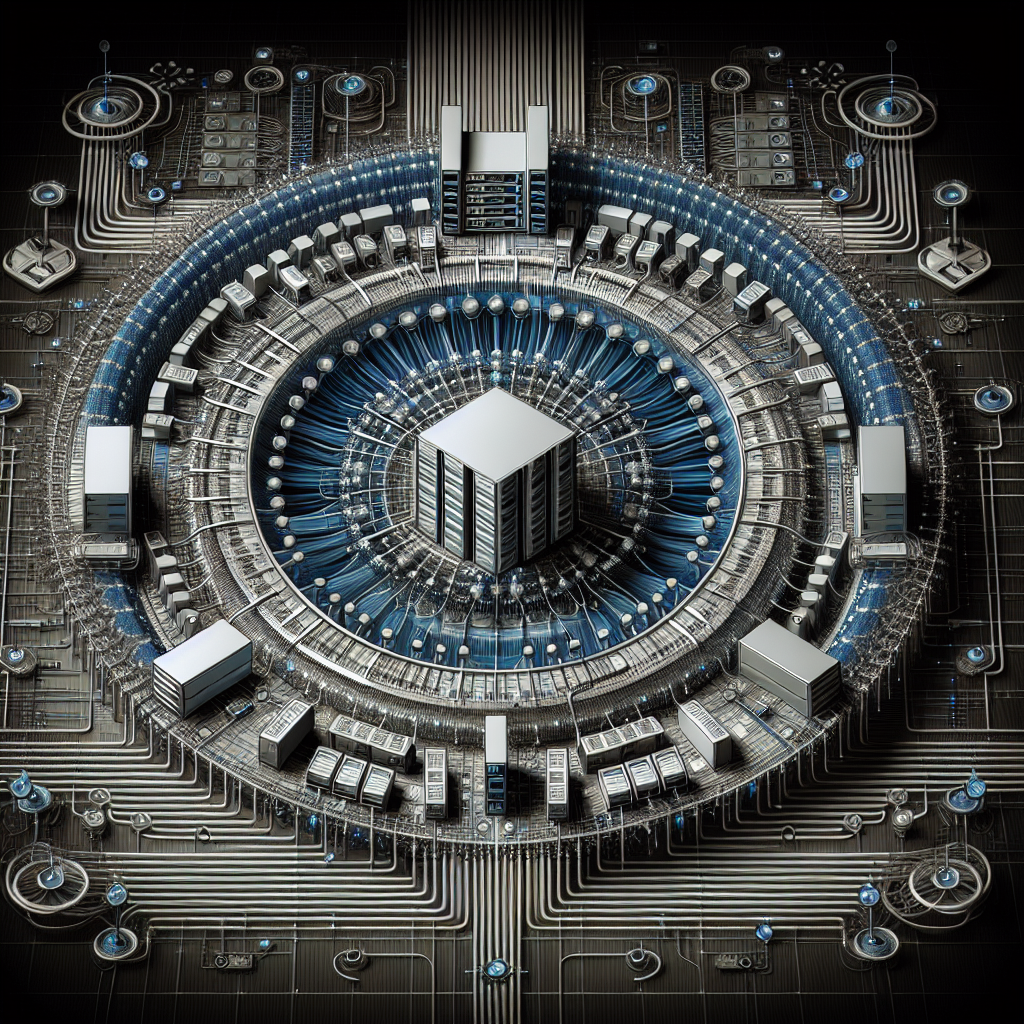
Scalability and Flexibility: Designing a Future-Proof Data Center Network Infrastructure
In today’s fast-paced digital world, businesses are constantly facing the challenge of keeping up with the ever-increasing demand for data processing and storage. As data volumes continue to grow exponentially, the need for a scalable and flexible data center network infrastructure becomes more crucial than ever. Designing a future-proof data center network infrastructure that can adapt to changing business needs and technological advancements is essential for ensuring the long-term success of any organization.Scalability is a key factor in designing a future-proof data center network infrastructure. Scalability refers to the ability of a network to accommodate growth and expansion without requiring a complete overhaul of the existing infrastructure. A scalable network infrastructure should be able to easily add or remove resources as needed, without causing downtime or disruption to operations. This is particularly important in today’s dynamic business environment, where companies need to quickly respond to changing market conditions and customer demands.
Flexibility is another important aspect of designing a future-proof data center network infrastructure. A flexible network infrastructure is one that can easily adapt to new technologies and applications, without requiring significant reconfiguration or investment. This flexibility allows businesses to quickly implement new services and applications, without being limited by the constraints of their existing infrastructure. In addition, a flexible network infrastructure enables businesses to easily scale up or down their resources based on fluctuating demands, ensuring optimal performance and cost-efficiency.
To design a future-proof data center network infrastructure, businesses should consider a number of key factors. First and foremost, they need to assess their current and future data processing and storage requirements, and ensure that their network infrastructure is capable of meeting these needs. Businesses should also consider the scalability and flexibility of their network infrastructure, and choose technologies and solutions that can easily adapt to changing business requirements.
In addition, businesses should also consider the security and reliability of their network infrastructure. A future-proof data center network infrastructure should be able to protect sensitive data and applications from cyber threats and ensure high availability and uptime. This requires implementing robust security measures, such as firewalls, intrusion detection systems, and encryption technologies, as well as redundant power supplies and backup systems to ensure continuous operation in the event of a failure.
Ultimately, designing a future-proof data center network infrastructure requires a careful balance of scalability, flexibility, security, and reliability. By investing in the right technologies and solutions, businesses can ensure that their network infrastructure is able to support their current and future needs, and remain competitive in an increasingly digital world. With a well-designed and future-proof data center network infrastructure, businesses can confidently embrace new technologies and innovations, and drive their success in the digital age.
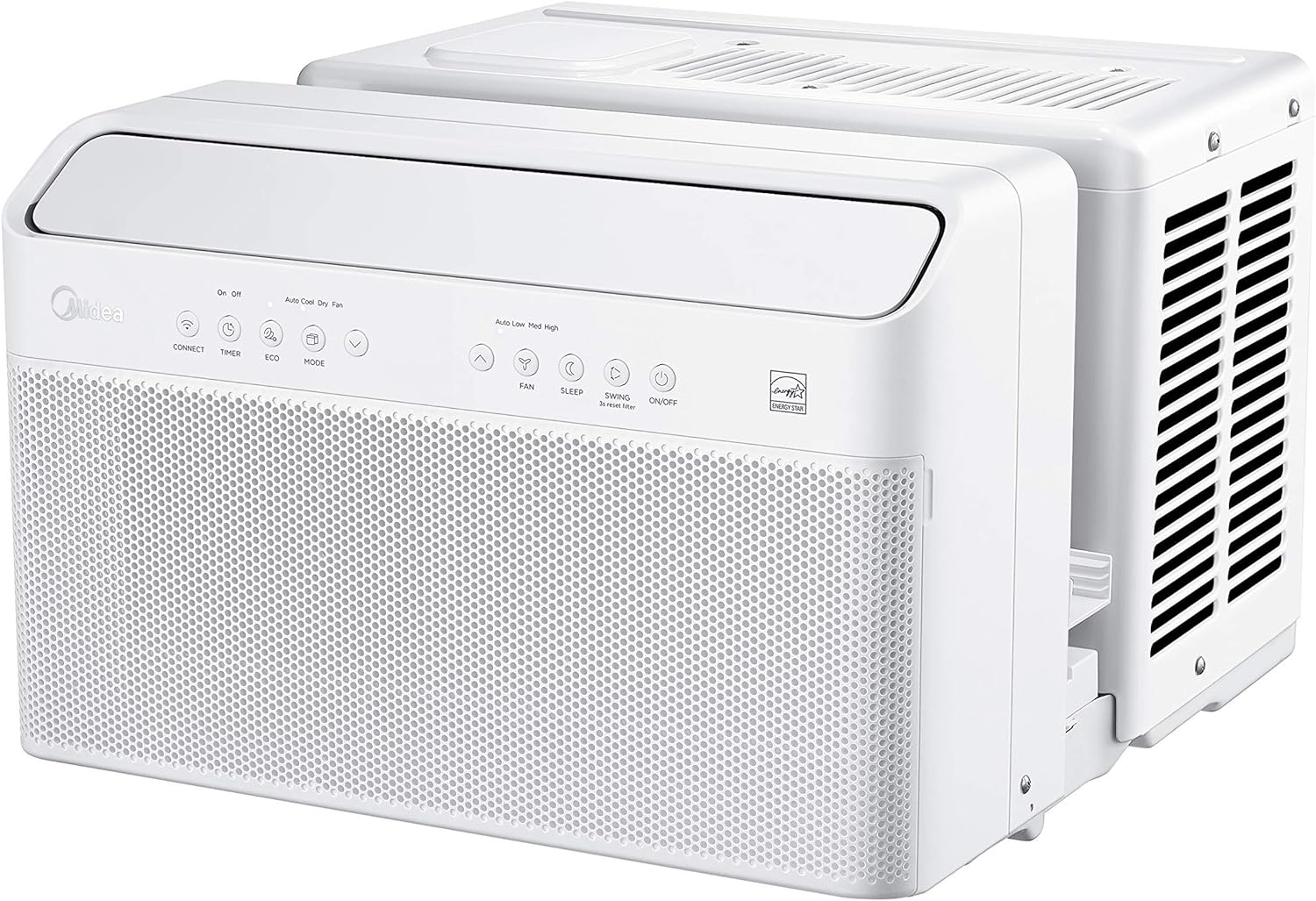
Midea U-Shaped Inverter Window Air Conditioner 12,000BTU with Open Window Flexibility, Robust Installation,Extreme Quiet, 35% Energy Saving, Smart Control, Alexa, Remote, Bracket Included (Renewed)
Price:$451.80– $279.99
(as of Nov 20,2024 02:10:07 UTC – Details)
This pre-owned or refurbished product has been professionally inspected and tested to work and look like new. How a product becomes part of Amazon Renewed, your destination for pre-owned, refurbished products: A customer buys a new product and returns it or trades it in for a newer or different model. That product is inspected and tested to work and look like new by Amazon-qualified suppliers. Then, the product is sold as an Amazon Renewed product on Amazon. If not satisfied with the purchase, renewed products are eligible for replacement or refund under the Amazon Renewed Guarantee.
More than 35% Energy Savings: With the advanced DC Inverter technology, Midea U achieves over 35% energy savings compared to other traditional units, and it’s the first window AC to obtain the ENERGY STAR Most Efficient 2020 Certification. You may also get exclusive benefits from your local energy distributor
Extreme Quiet: 9 times quieter than some traditional units. The U-shape blocks the noise from the cooling system using your window. This design allows for extremely quiet operation as low as 42 dBA – almost as quiet as a library – so you can get a restful night’s sleep or binge your favorite shows undisturbed
Flexible window open: Midea U-shaped design allows your window to open, bringing fresh air into your home anytime allowing you to maintain more of your view
Smart Control: The Midea U is Wi-Fi- enabled, it can be controlled from anywhere through the cloud using the MideaAir app on iOS or Android. You can also use voice commands with Alexa or Google Assistant if you prefer
Robust Installation: Support bracket is included for a more robust installation that supports the unit with the window open or closed.Available for single-hung or double hung window with size: 22 – 36 inches, minimal height at 13.75 inches.Customers say
Customers like the quietness, functionality, and appearance of the air conditioner. They mention it moves a lot of air very quietly, the remote works well, and it keeps a stable room temperature. Some are also happy with the quality and value for money. However, some dislike missing parts and disagree on the ease of installation.
AI-generated from the text of customer reviews
Looking for a powerful and efficient window air conditioner that offers open window flexibility, robust installation, extreme quiet operation, energy-saving features, smart control options, and more? Look no further than the Midea U-Shaped Inverter Window Air Conditioner 12,000BTU!This renewed unit is a great option for cooling your space efficiently and effectively. With its innovative U-shaped design, this air conditioner allows you to open and close your window with ease without sacrificing performance. The robust installation ensures a secure fit in your window, while the extreme quiet operation guarantees a peaceful environment in your home.
Not only does this air conditioner provide powerful cooling, but it also boasts a 35% energy-saving feature to help lower your energy bills. With smart control options, including compatibility with Alexa and a remote control, you can easily adjust the settings to your liking without even leaving your seat. Plus, the included bracket makes installation a breeze.
Don’t miss out on the opportunity to upgrade your home cooling system with the Midea U-Shaped Inverter Window Air Conditioner 12,000BTU. Stay cool and comfortable all summer long with this top-of-the-line unit!
#Midea #UShaped #Inverter #Window #Air #Conditioner #12000BTU #Open #Window #Flexibility #Robust #InstallationExtreme #Quiet #Energy #Saving #Smart #Control #Alexa #Remote #Bracket #Included #Renewed
Scalability and Flexibility: Key Considerations for Data Center Database Design
In today’s digital age, data is king. From customer information to transaction records, organizations rely heavily on databases to store and manage their valuable data. However, as data volumes continue to grow exponentially, the need for scalable and flexible database design in data centers has become more important than ever.Scalability and flexibility are two key considerations that organizations must keep in mind when designing a database for their data center. Scalability refers to the ability of a database to handle increasing amounts of data and traffic without sacrificing performance. Flexibility, on the other hand, refers to the database’s ability to adapt to changing business requirements and data structures.
When it comes to scalability, there are several factors to consider. First and foremost, organizations should choose a database system that can scale horizontally, meaning it can distribute data across multiple servers to handle increased loads. This approach allows for better performance and reliability, as it reduces the risk of a single point of failure.
Additionally, organizations should consider the ability of the database to scale vertically, meaning it can handle increased data volumes within a single server. This can be achieved through hardware upgrades, such as adding more memory or storage to the server.
Flexibility is equally important when designing a database for a data center. Organizations should choose a database system that supports a wide range of data types and structures, as well as the ability to easily add or modify schemas as needed. This ensures that the database can adapt to changing business requirements and data sources without requiring a complete overhaul.
Furthermore, organizations should consider the flexibility of the database in terms of deployment options. Cloud-based databases, for example, offer greater flexibility in terms of scalability and resource allocation, as organizations can easily scale their databases up or down based on their needs.
Overall, scalability and flexibility are key considerations when designing a database for a data center. By choosing a database system that can handle increasing data volumes and adapt to changing business requirements, organizations can ensure that their data remains secure, accessible, and reliable in the long run.
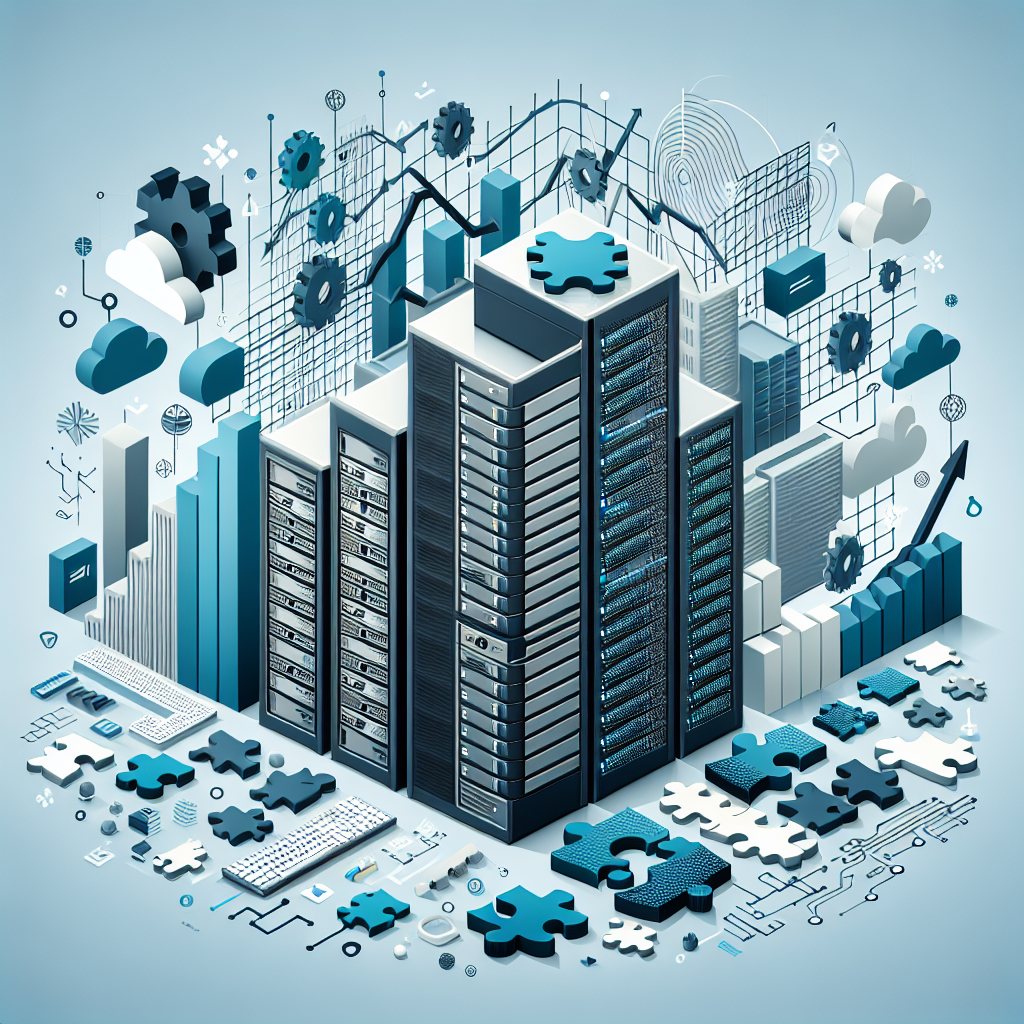
Scalability and Flexibility: How Data Center Servers Adapt to Changing Business Needs
In today’s fast-paced and ever-changing business environment, organizations need data center servers that can easily adapt to their evolving needs. Scalability and flexibility are two key factors that play a crucial role in ensuring that data center servers can meet the demands of a growing business.Scalability refers to the ability of a system to handle an increasing amount of work or its potential to accommodate growth. This is particularly important for businesses that are experiencing rapid expansion or fluctuating workloads. Data center servers that are scalable can easily adjust to accommodate increased traffic, storage needs, or processing power without compromising performance.
Flexibility, on the other hand, refers to the agility of a system to adapt to changing requirements or environments. In the context of data center servers, flexibility allows organizations to easily add or remove resources, integrate new technologies, or make adjustments to meet specific business needs. This is essential for businesses that operate in dynamic industries or face unpredictable challenges.
One of the key ways data center servers achieve scalability and flexibility is through virtualization technology. Virtualization allows organizations to create virtual instances of servers, storage, and networking resources, which can be easily scaled up or down based on demand. This not only improves resource utilization but also enables organizations to quickly adapt to changing business needs without the need for physical hardware upgrades.
Another important factor in ensuring scalability and flexibility in data center servers is cloud computing. Cloud services provide organizations with on-demand access to a wide range of resources, allowing them to quickly scale their operations up or down as needed. Cloud computing also offers flexibility in terms of deployment options, allowing organizations to choose between public, private, or hybrid cloud models based on their specific requirements.
Additionally, modern data center servers are designed with modular architectures that allow for easy upgrades and expansions. This means that organizations can easily add new components, such as additional storage or processing units, to their servers without disrupting operations. This modularity also enables organizations to future-proof their infrastructure by allowing them to adapt to new technologies or trends as they emerge.
In conclusion, scalability and flexibility are essential features that organizations should look for in their data center servers. By ensuring that their servers can easily adapt to changing business needs, organizations can stay competitive, agile, and responsive in today’s fast-paced business landscape. Investing in scalable and flexible data center servers is not just about meeting current demands, but also about preparing for future growth and challenges.
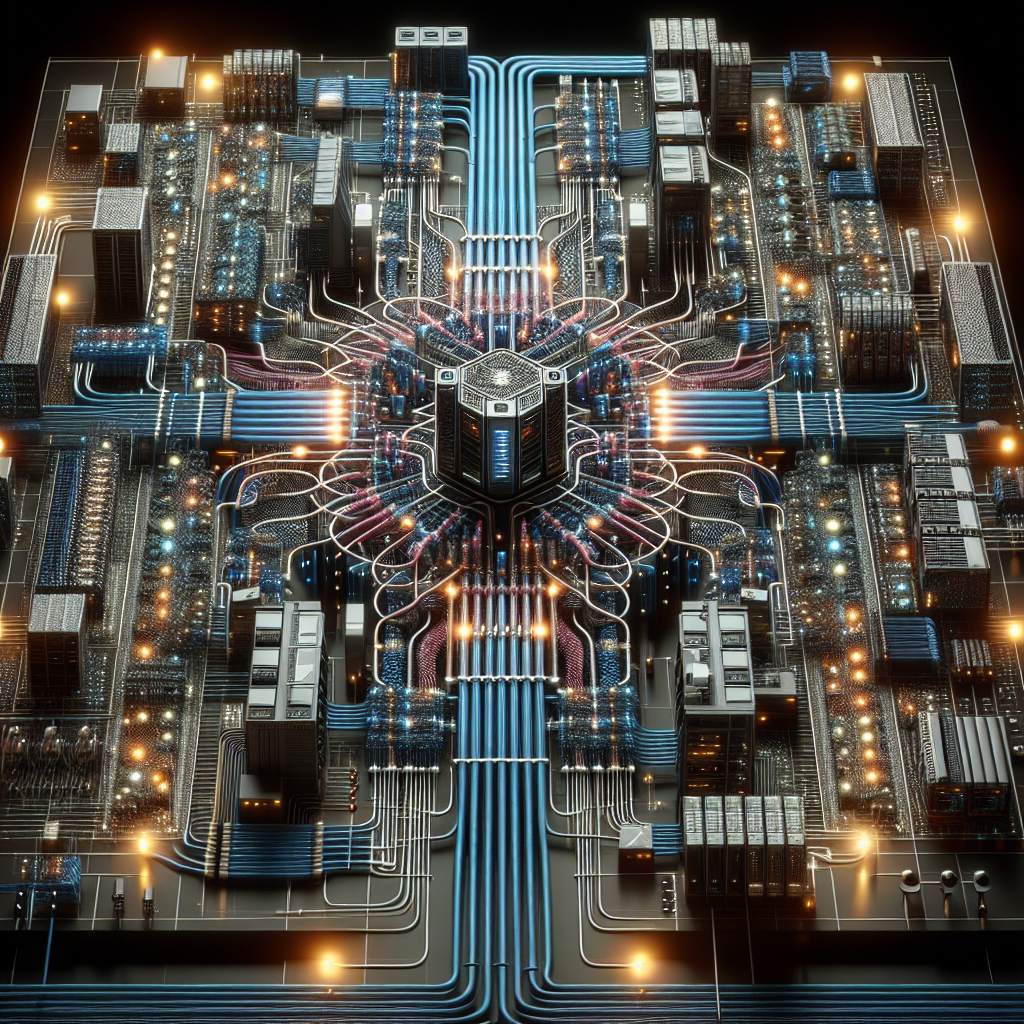
Scalability and Flexibility: Designing a Robust Data Center Network Infrastructure
In today’s digital age, the importance of a robust and scalable data center network infrastructure cannot be overstated. With the increasing amount of data being generated and processed by businesses, organizations need a network that can handle the demands of their operations while also providing the flexibility to adapt to changing requirements.Scalability is a key consideration when designing a data center network infrastructure. As businesses grow and their data needs increase, the network must be able to accommodate this growth without sacrificing performance. This means having the ability to easily add or remove resources, such as servers and storage devices, as needed. A scalable network infrastructure allows for seamless expansion without causing disruptions to operations.
Flexibility is another crucial aspect of a robust data center network infrastructure. In today’s fast-paced business environment, organizations need a network that can quickly adapt to changing requirements and technologies. This includes the ability to support new applications and services, as well as integrate with emerging technologies such as cloud computing and virtualization.
When designing a data center network infrastructure, it is important to consider both scalability and flexibility. This can be achieved through a combination of hardware and software solutions, as well as careful planning and design. Here are some key factors to consider when designing a robust data center network infrastructure:
1. Redundancy: Redundancy is essential for ensuring high availability and reliability in a data center network. This includes redundant power supplies, network connections, and equipment to prevent downtime in case of hardware failures.
2. Bandwidth: Adequate bandwidth is crucial for supporting the increasing volume of data being transmitted across the network. High-speed connections, such as fiber optics, can help ensure fast and reliable data transfer.
3. Virtualization: Virtualization technology allows for the efficient use of resources and enables organizations to scale their network infrastructure without the need for physical hardware upgrades. This can help reduce costs and improve flexibility.
4. Automation: Automation tools can help streamline network management tasks and improve efficiency. By automating routine processes, organizations can free up time for IT staff to focus on more strategic initiatives.
5. Security: Security is a top priority for any data center network infrastructure. Robust security measures, such as firewalls, intrusion detection systems, and encryption, are essential for protecting sensitive data and preventing unauthorized access.
In conclusion, designing a robust data center network infrastructure requires careful planning and consideration of scalability and flexibility. By incorporating the right hardware, software, and best practices, organizations can build a network that can support their current needs while also being able to adapt to future requirements. Investing in a scalable and flexible network infrastructure is essential for ensuring the success of businesses in today’s digital world.
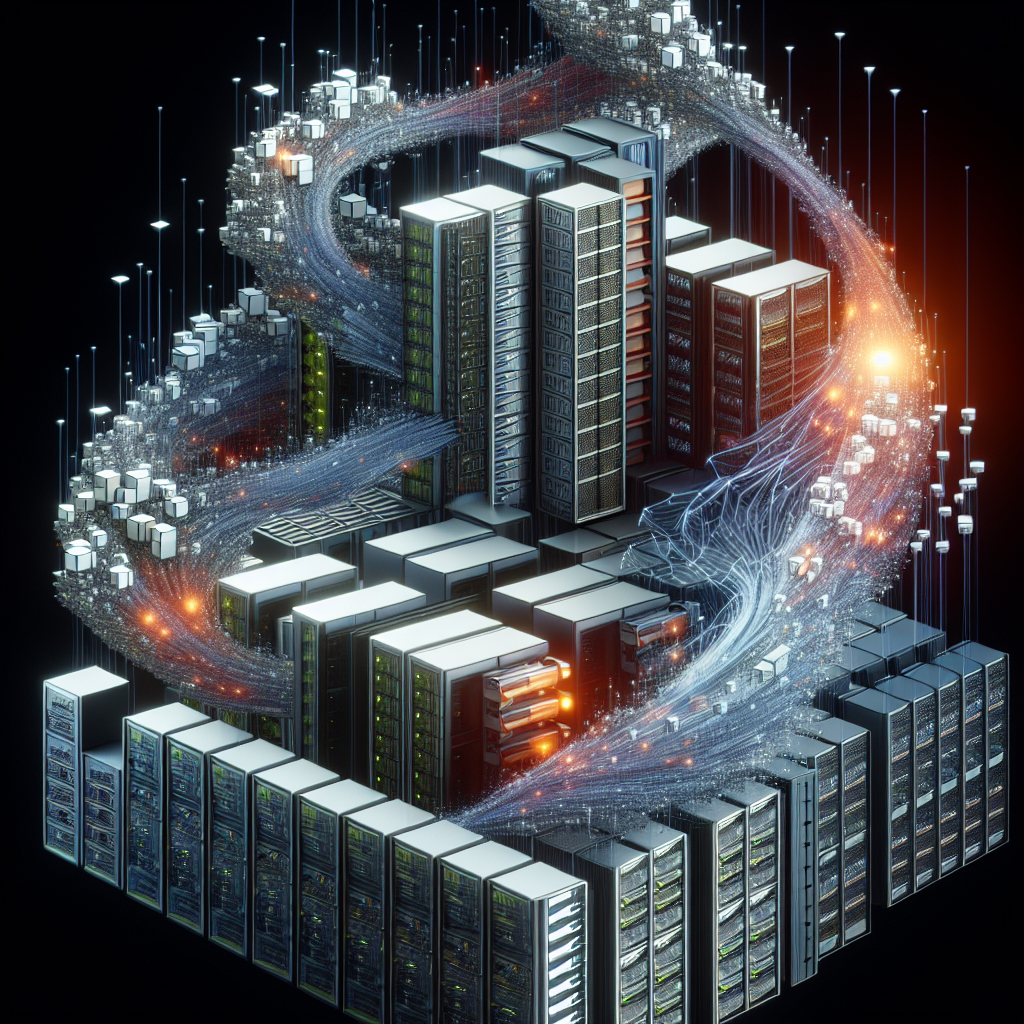
Scalability and Flexibility: Key Considerations for Data Center Storage
In today’s fast-paced digital world, data centers play a crucial role in storing and managing vast amounts of information. As businesses continue to grow and expand, the need for scalable and flexible data center storage solutions becomes increasingly important. Scalability and flexibility are key considerations when it comes to choosing the right storage solution for your data center.Scalability refers to the ability of a storage system to handle increasing amounts of data without compromising performance. A scalable storage solution should be able to grow with your business, allowing you to easily add more storage capacity as needed. This is essential for businesses that experience rapid growth or seasonal fluctuations in data storage requirements. Without a scalable storage solution, businesses may find themselves constantly having to upgrade or replace their storage systems to keep up with their data storage needs.
Flexibility, on the other hand, refers to the ability of a storage system to adapt to changing business requirements and technologies. A flexible storage solution should be able to support a variety of storage technologies, such as flash storage, disk storage, and cloud storage, to meet the diverse needs of different workloads and applications. It should also be able to easily integrate with existing infrastructure and support various data management and protection features.
When it comes to data center storage, businesses should consider both scalability and flexibility to ensure they have a storage solution that can meet their current and future needs. Here are some key considerations to keep in mind when evaluating data center storage solutions:
1. Capacity: Make sure the storage solution can easily scale to accommodate your growing data storage needs. Look for storage systems that offer modular architecture and support for adding additional storage capacity without disrupting operations.
2. Performance: Consider the performance requirements of your workloads and applications. Choose a storage solution that can deliver the performance needed to support your most demanding workloads, while also providing the flexibility to adjust performance levels as needed.
3. Data protection: Ensure the storage solution offers robust data protection features, such as data encryption, snapshotting, and replication, to safeguard your data against loss or corruption.
4. Integration: Evaluate how well the storage solution integrates with your existing infrastructure and applications. Look for storage solutions that support industry-standard protocols and APIs to facilitate seamless integration with other systems and applications.
5. Cost: Consider the total cost of ownership of the storage solution, including upfront costs, maintenance costs, and scalability costs. Look for storage solutions that offer a balance of performance, scalability, and cost-effectiveness to meet your budget requirements.
In conclusion, scalability and flexibility are key considerations when it comes to choosing the right data center storage solution for your business. By carefully evaluating these factors and selecting a storage solution that can grow and adapt to your changing needs, you can ensure you have a storage solution that can support your business both now and in the future.
